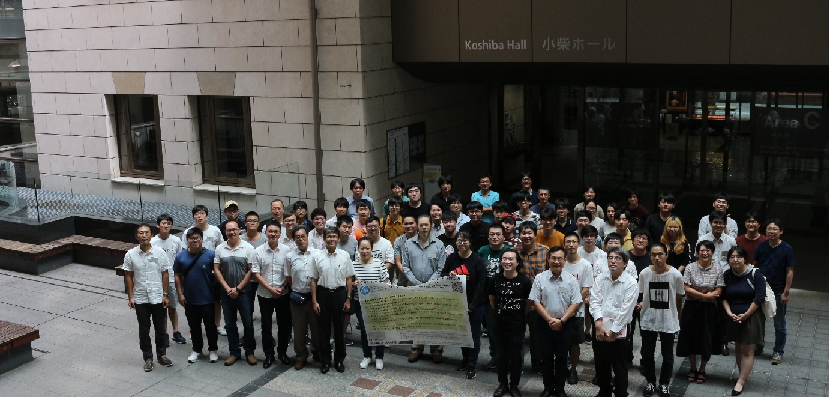The 18th CNS International Summer School (CNSSS19)
Wako/Hongo Campus
The 18th CNS International Summer School will be held on Augst 21st to 27th, 2019 at Hongo Campus, University of Tokyo. The school is hosted by the CNS, University of Tokyo and supported by RIKEN Nishina Center and JSPS A3 Foresight program and cooperated by ANPhA.
The school aims to foster the young generation of nuclear physicists, in particular Asian students/post-docs. The lectures of theoretical and experimental nuclear physics will be given by several world-leading lecturers. There will be also young scientist sessions where the participants will talk on their own research. CNSSS Young Scientist Awards will be given to several contributions.
The lecturers of this years includes;
- Prof. Alan Wuosmaa (Univ. of Connecticut, USA) "Experimental nuclear structure studies with radioactive isotope beams"
- Prof. Shan-Gui Zhou (Institute of Theoretical Physics, China) "Properties and synthesis mechanism of superheavy elements"
- Prof. Kipp-Cannon (Univ. of Tokyo, Japan) "Gravitational wave"
- Prof. Hirohiko Shimizu (Nagoya Univ., Japan) "Neutrons and Fundamental symmetry with nuclei (tentative)"
- Prof. Katsuyuki Fukutani (IIS, Univ. of Tokyo) "Interdisciplinary Study with Quantum Beam (tentative)"
- Prof. Noritaka Shimizu (CNS, Univ. of Tokyo) "Practical course of the nuclear shell model"
- Dr. Tadaaki Isobe (RIKEN) "Overview of RIBF"
Registration fee below is asked to pay in cash at the on-site registration.
- Senior scientists; 1,000 JY
- Staff scientists; 4,000 JY
- PD; 3,000 JY
- PhD students; 1,000 JY

Alan Wuosmma
Asahi Chikaoka
Bharat Kumar
Daiki Nishimura
Dongfang Wang
Eunseok Hwang
Gyeonggyun Kim
Haozhao Liang
Hideki Shimizu
Hideki Ueno
Hidetoshi Yamaguchi
Hideyuki Sakai
Hikari Wauke
Hikaru Sakakibara
Hirohiko Shimizu
Hiroki Nagahama
Hiroyoshi Sakurai
HONGFU LI
Hui Tong
Hyungjun lee
Jaehwan Lee
Javier Menendez
Jiajing Lu
Jian GAO
Jongwon Hwang
Junki Tanaka
Kai MA
Kai Wen
Katsuyuki Fukutani
Keisuke Nakamura
Keita Kawata
Ken'Ichiro Yoneda
Kentaro Yako
Kipp Cannon
Kota Yanase
Longhui Ru
Masanori Dozono
Min Zhang
Minsu Kwon
Nanru Ma
Naoya Ozawa
Naoyuki Itagaki
Natsuki Shimizu
Nguyen Thi Minh Sang
Nobu Imai
Noritaka Kitamura
Noritaka Shimizu
Penghui Chen
Phuc Nguyen Hoang
Qian Yin
Qiushi Liu
Reiko Kojima
Richard Crane
Rieko Tsunoda
Sangyeong Son
Sarah Naimi
Seiya Hayakawa
Shan-Gui Zhou
Shin'ichiro Michimasa
Shinsuke OTA
Shintaro Okamoto
Shoichiro Masuoka
Shuhei Kiyotake
Shutaro Hanai
Siwei Huang
Sota Yoshida
Susumu Shimoura
Tadaaki Isobe
Takashi Abe
Tomohiro Uesaka
Tomoya Naito
Ya-Fei Guo
Yan Lyu
Yasuhiro Sakemi
Yongwoo Choi
Youngseub Jang
Yu-Ting Rong
Yuma Hirai
Yusuke Tsunoda
Yutaka Utsuno
Yuto Hjikata
Zhenyu Wang
Zhichao Zhang
Ziting Sun
